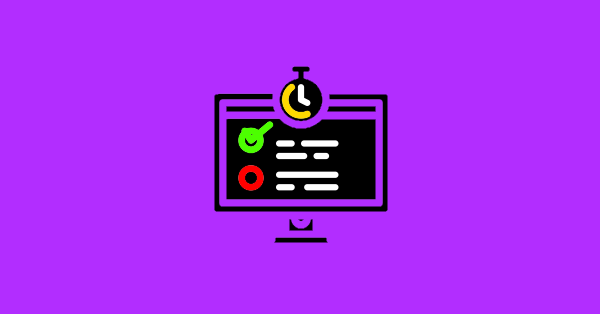Cheating on exams is the biggest academic integrity concern for online classes. Schools and universities have invested in all sorts of security measures, from ineffective lockdown browsers to webcam monitoring that students call “an invasion of privacy.”
Requiring a lockdown browser and webcam surveillance isn’t just overkill for academic integrity, it’s invasive and discriminatory toward low-income students. That’s because those security measures often run into compatibility issues with older computers and Chromebooks, the most common budget laptop.
Automated surveillance also reinforces stigma that make students apprehensive about participating in online education. Don’t have the luxury of a quiet room to attend online classes? Does being home mean you’re responsible for taking care of family members coming in and out of your camera shot? Automated systems will flag those circumstances as suspicious, spiking anxiety in an already anxious time. Faculty can override them, but that still means applying extra scrutiny to students who have done nothing to warrant it.
I don’t require webcam surveillance on account of the compatibility issues and – let’s be honest – the creepiness of the whole thing. Nor do I require a lockdown browser when most students have an unlocked smartphone sitting right next to them.
The solution doesn’t have to be a surveillance state. Teachers have plenty of less intrusive options when it comes to exam settings, and the style of the assessment itself.
Exam Settings
A combination of exam settings can present obstacles to collaboration and overuse of study aids.
- Display one question at a time
- Disable backtracking, forcing the exam to be taken linearly
- Randomize question order or deploy multiple exam versions
This got me in the spring. Because questions were in the same order, it was easy for students to collaborate on the test. Time signatures and identical wrong answers helped identify the guilty parties, but I’d rather have a setup that removes the temptation. - Use a timer
I used to think time limits for online tests needed to be extremely tight, or students would look up answers. But that caused serious test anxiety and penalized students who legitimately take longer to read through and process questions. With one-at-a-time question display and no backtracking, I’ve found completion times to vary similarly to an in-class setting. Some students finish quickly, some at a moderate pace, and a handful use the whole time.
It’s not a perfect testing environment. I prefer students being able to go back and change an answer if another question later in the exam made them realize a mistake. I also think randomizing question order disrupts the continuity of the exam. Fortunately, there may be an even better solution, especially for upper-level courses.
[More: 8 tips for setting up and teaching online classes during coronavirus closures]
Rethinking Assessment
Worrying about the integrity of our exams may make better educators out of us yet. The assessments that measure higher levels of learning are also the ones least prone to cheating.
If your exam can be upended in seconds by the presence of a study sheet, then it’s probably relying heavily on basic recall items. Consider application questions that require putting concepts into action. Even if the student has the definition beside them, they’ll have to know how to use it (and honestly, isn’t that closer to how the real world works?).
You may also decide that exams aren’t the best assessment in the first place. Critical essays or independent research are tougher to grade, but increase investment, comprehension, and retention. That equates to a longer lasting impact than cramming, spilling the information out onto a test, then forgetting it.
I didn’t eliminate exams in my online and hybrid classes, but I did reduce their weight on the final grade. In one course, I increased the weight of existing practical assignments. In another, I created new take-home case analyses that will generate more critical thinking time with the topic than a few multiple choice questions or even a condensed short answer scenario.
What started out of necessity has made my classes more balanced to reward a greater range of student strengths. That’s why the changes will likely stick even when our classrooms return to normal.
[More: 5 tips from my first week teaching online from home]
Buying In
So does cheating run rampant on my exams? I caught a few in the spring transition. But the fix was easy, and through two rounds of exams this semester, things look on the up-and-up. Could I be missing some? Sure. But class averages are right where they usually are for in-person exams.
I put a reminder about the academic integrity policy in the exam instructions. I also talk about it in class. I’m upfront about what the testing environment is going to be like. The relief on students’ face when you tell them you’re not recording them isn’t because they know they can cheat; it’s because they know they can relax. It’s a pact of sorts – I’m trusting you; please meet me with an honest effort. A bit of a clichéd “We’re all in this together” appeal… but I think it works.
As for more longform, at-your-own-pace assessments, existing plagiarism detection tools and good old fashioned common sense continue to do the trick.
Don’t be draconian – it’s the last thing we need in this moment, and it doesn’t really work anyway. Tweak some settings, rework some questions, and when you have the time, think about alternative means of measuring success in your classes. It’ll serve your students well beyond a pandemic semester.
Cover illustration based on an image by supalerk laipawat on The Noun Project.
